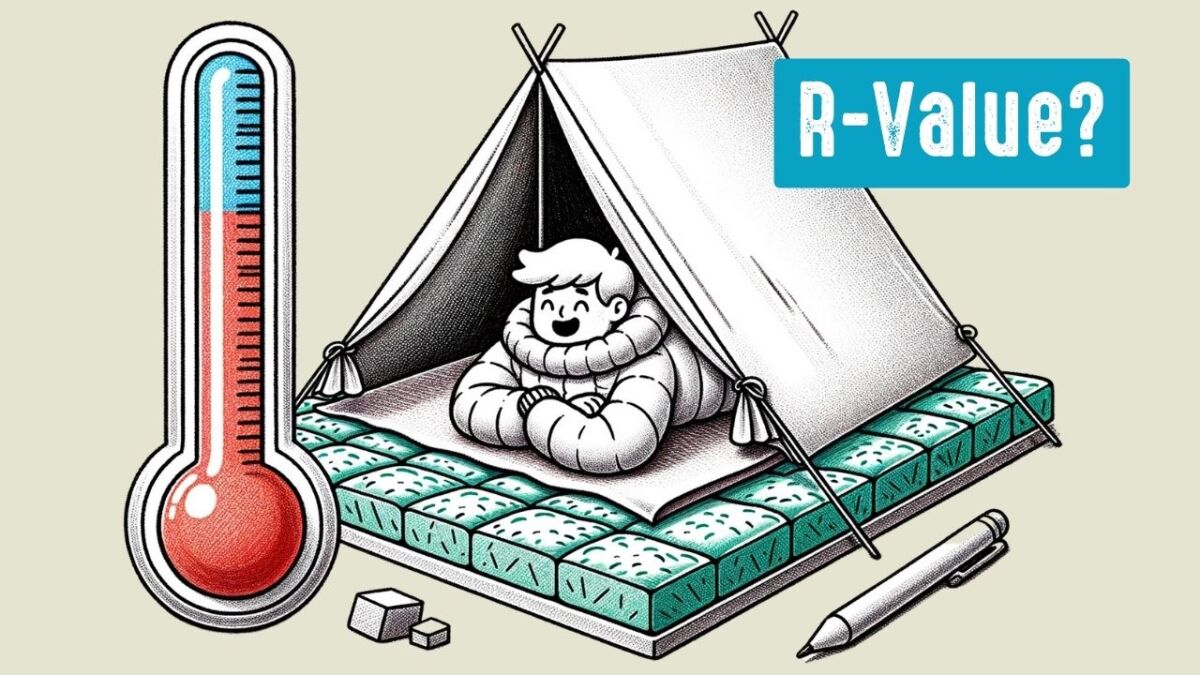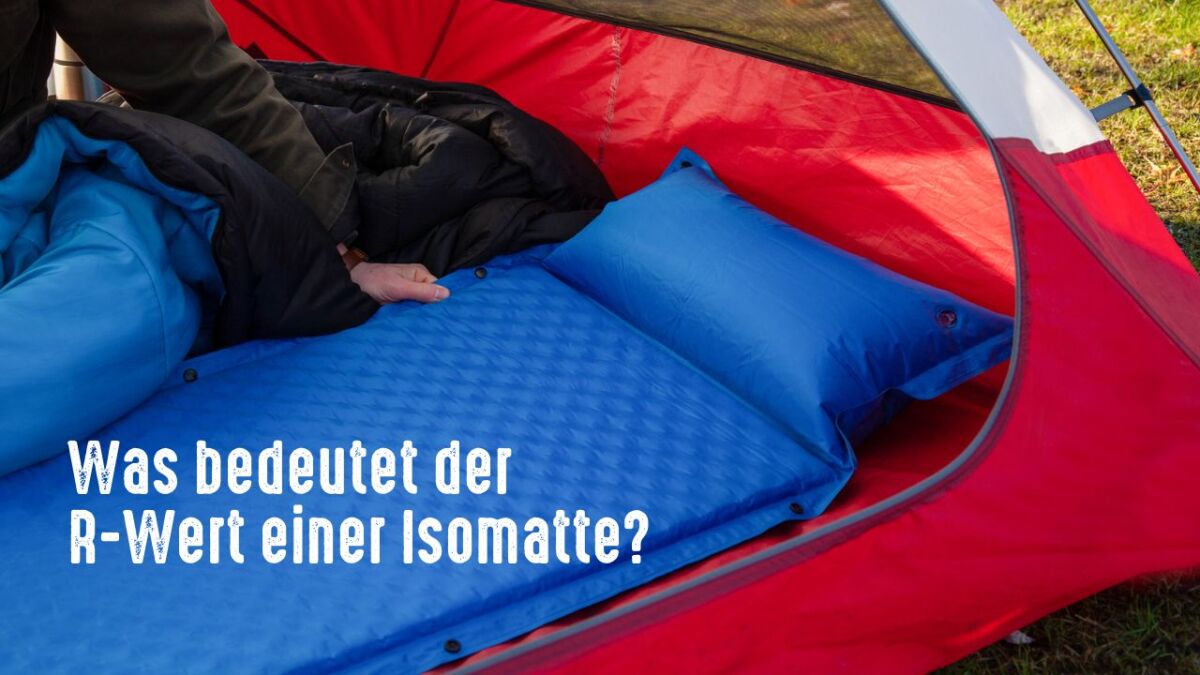
Staying Warm in the Wilderness: What is the R-Value - Its Importance in Choosing Your Insulation Mat
👉 The key facts from this guide
- The R-value for sleeping pads is a measurement of the pad's insulation ability.
- The higher the R-value, the better the sleeping pad insulates and the less heat is lost.
- The R-value depends on various factors such as material, surface structure, and thickness.
- It is possible to add the R-values of multiple sleeping pads to increase insulation.
- Additional measures such as leaves or high-quality sleeping bags can improve insulation.
- When purchasing a sleeping pad, the R-value should be considered to obtain the appropriate insulation performance for the planned conditions.
Finding the right equipment for the appropriate conditions is not always easy.
Now there is a whole flood of offers, but how are you supposed to keep track of them? The R-value should provide you with initial assistance and refers to sleeping mats.
Because depending on the material, density, and volume, a sleeping pad has different insulation effects and therefore conducts a certain amount of heat. The R-value refers precisely to this insulation effect. A high R-value means high insulation, insulation effect, and warmth, and vice versa.
How to find your ideal sleeping pad in terms of thermal insulation, you will find out here.
What is the R-value of sleeping mats?
The R-value for sleeping mats is a measurement that indicates how well a sleeping mat insulates. The higher the measurement, the better the insulation of the sleeping mats and the less heat is lost.
The R-value will help you choose the perfect sleeping pad for your specific needs. If you need a sleeping pad for the summer and are unsure which one is suitable, you can use the R-value as a guide.
The same applies to the cold winter. It is of utmost importance to lie well insulated here, as most of the cold comes from the ground to your body.

And if you want to understand the technology behind it:
The R-value refers to the thermal insulation effectiveness of insulation materials and indicates how much heat energy per square meter and Kelvin per time passes through the material. The higher the R-value, the better the insulation. R-values for sleeping mats typically range from R-1.5 to R-3.5 per centimeter of thickness.
What does the R-value depend on?
Several factors play a role in the R-value:
On the one hand, there are different materials that conduct heat to varying degrees.
- There is the classic option: foam. Foam is stable and closed-cell. Depending on the thickness, you can lie comfortably and be protected from the cold.
- In contrast, there is an inflatable mat, which is mostly made of robust plastics. It contains multiple air chambers, providing insulation against the cold. However, an inflatable mattress is susceptible to damage, but can be quickly repaired with a patch kit.
- Additionally, there are filled, inflatable sleeping pads that are filled with down or synthetic material. This adds extra weight, but also increases insulation.
Further factors for heat conduction are the surface structure and the thickness of the material.

Overview of the R-value - when to use which R-value?
In the following table, you can check exactly which sleeping pad is suitable for your needs.
| R-Value | Temperature | Season | Use Case |
|---|---|---|---|
| 1.5 - 2.5 | up to +7 °C | Spring, Summer, Autumn | Camping in summer |
| 1.5 - 2.5 | up to +2 °C | Spring, Summer, Autumn | Camping in spring and autumn |
| 2.5 - 3.5 | up to -5 °C | Spring, Summer, Autumn, moderate winter nights | Year-round camping |
| 3.5 - 4.5 | up to -11 °C | All seasons | Bivouacs in alpine environments |
| 4.5 - 5.5 | up to -17 °C | Winter | Winter bivouacs |
| 5.5 - 6.5 | up to -22 °C | Winter, expeditions | Expeditions |
| over 6.5 | from -22 °C | Extreme winter and expedition operations | Extreme operations on polar expeditions, etc. |
Table 1: Source Bergzeit.de
Can the R-value be added?
You are probably wondering if you can stack multiple sleeping mats on top of each other and calculate the R-value. This is possible!
However, you can only add the values one to one if the mats are made of the same material and have the same properties. For example, if you have two foam mats with an individual R-value of 2, you will end up with an approximate R-value of 4.
With two different mats, the R-value logically increases, but the overall thermal performance of both mats may not necessarily be maintained. This goes far beyond my understanding of physics, but should be sufficient at this point.
How can I further increase thermal insulation?
Do you already have a sleeping pad and now need a groundsheet with a higher R-value? Then you don't necessarily have to buy a new pad. You can also increase your thermal insulation with additional measures and thus sleep restfully in cold nights.
First, you can work with leaves. A good leafy ground can make a big difference and additionally protect you from a cold night, in addition to the sleeping mat.
In addition, sleeping bag and tent play a role. If you only sleep outside with a sleeping pad, it is even more important to choose a suitable sleeping pad. With a high-quality sleeping bag and tent as wind and weather protection, you don't have to pay as much attention to the ideal sleeping pad - or rather, you have some tolerance here at least.
Can a sleeping pad be too warm?
In summer, using a sleeping pad for winter is initially not a problem. It may get warmer at night, but you can also open your sleeping bag or remove layers of clothing.
In winter, on the other hand, a too warm sleeping pad can become uncomfortable. You sweat a lot during sleep and will not be completely dry the next morning. Getting up can then quickly become a problem.
Especially the difference between a warm bed and the outside temperature can be demanding. However, this is more my own opinion. Some of you may even want to experience this exact thing.

Conclusion: You should consider the R-value when making a purchase
The R-value can support you in choosing your sleeping pad and prepare you well for cold weather.
Listen to your inner voice about what you prefer. Both in terms of warmth and in terms of your surface.
Inflatable air mattresses may rustle, but they offer adjustable firmness. In contrast, foam mats are more stable and feel more natural. If the R-value is too low, you can upgrade your bed with leaves or additional equipment.
Reading tip at the end: Here you can find my list of the best sleeping pads.

Sources for the guide
https://www.outdoornights.de/rwert.php
https://www.bergzeit.de/magazin/r-wert-isomatte/
https://www.globetrotter.de/magazin/kaufberatung-isomatten-thermomatten-und-luftmatratzen/
https://de.wikipedia.org/wiki/Isomatte
https://www.bergzeit.de/magazin/r-wert-isomatte/
https://upgradecamping.com/what-is-r-value-for-winter-camping/

Author of the guide
Martin Gebhardt
Hey, I'm Martin. On my blog, you will learn the basics and numerous details about living in the wild. I think survival, bushcraft and the good life in nature are the keys to happiness. Find me here on Instagram or on YouTube. You can find more about my mission on the About Me page.
Was this guide helpful?
20 people found this guide helpful.
5.00 out of 5 points (20 Ratings)
Comments (0)
This post may contain affiliate links. So if you click on the links and make a purchase, I will receive a small commission at no additional cost to you. Click here, to learn more about it.


